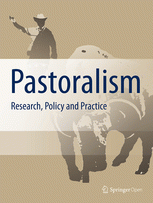There are increasing calls in Africa for ‘sustainable intensification’ of agriculture with the aim of increasing productivity whilst minimizing the negative environmental and social impacts. This paper questions whether adopting a landscape approach—and in particular the retention of forests within agricultural landscapes—could fulfill these goals for smallholder farmers in some regions of Africa. Using a landscape in Southern Ethiopia comprised of three zones of increasing distance from a legally protected forestas a case study, the performance of a stratified sample of 27 farms was assessed through detailed surveys and empirical measurements. While livestock productivity was found to be higher closer to the forest, no difference was found for crop or total farm productivities across the three zones. Partial nutrient balances (a productivity dimension of farm sustainability), redundancy (a proxy of resilience), and equality in the distribution of livestock increased with increasing proximity to the forest. Dependency on external inputs also decreased with increasing proximity to the forest. We conclude that, under certain conditions, the retention of forests in agricultural landscapes, and the use of these forests for livestock grazing and fuelwood collection, may promote sustainability, greater resilience and equality of smallholder farming systems, without compromising on-farm productivity. Thus, landscape approaches may provide a pathway to sustainable intensification, and may represent a research and development arena that deserves increasing attention in the sustainable intensification debate.
DOI:
https://doi.org/10.1016/j.agee.2018.04.020
Altmetric score:
Dimensions Citation Count:
























